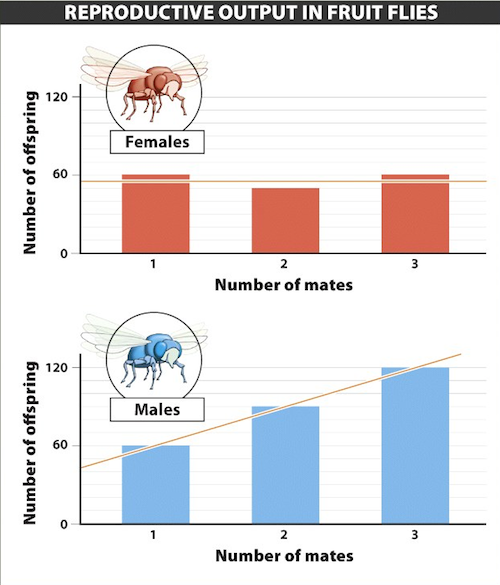
Chapter 9. Chapter 9 Graphic Content
Introduction

Instructions
Review the information provided in the graph to answer each question below.
After submitting your answer, you will be provided feedback to check if your response is correct.
(This activity contains 5 questions.)
1.

1. According to the top bar graph, how many offspring does a female with one mate produce? How does this compare with the number of offspring produced by a male with one mate?
2.

2. What is the number of offspring produced by females with two mates? Why is this lower than the number for females mating with just one male? What additional data would help you answer this question?
3.

3. How many offspring do you think a female with four mates would have? What about a male with four mates?
4.

4. According to this figure, what limits the reproductive output of a female fruit fly? What limits a male’s reproductive output?
5.

5. Why is it important to have the same axes on both graphs?
Activity results are being submitted...